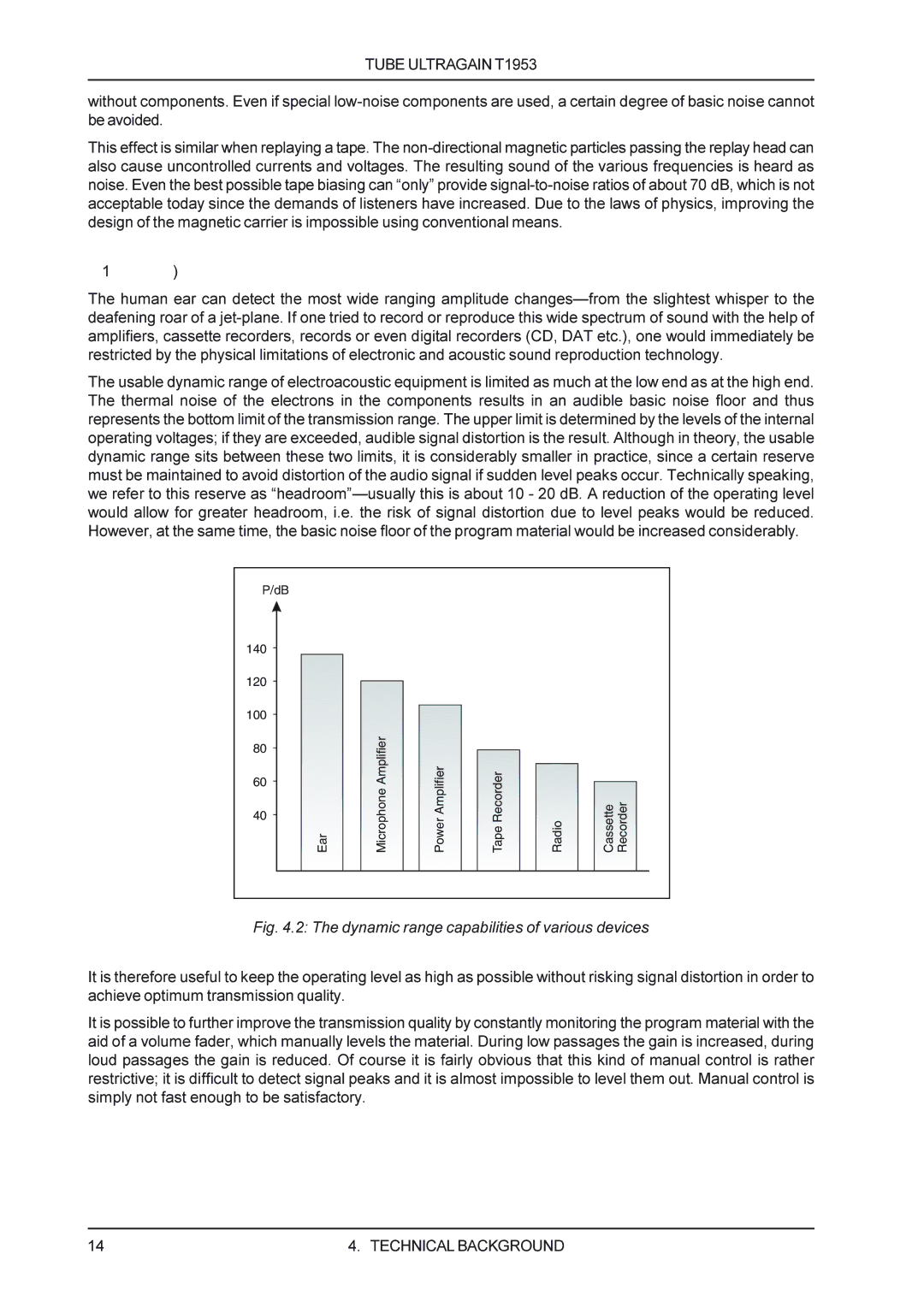
TUBE ULTRAGAIN T1953
without components. Even if special
This effect is similar when replaying a tape. The
4.1.2 What are audio dynamics?
The human ear can detect the most wide ranging amplitude
The usable dynamic range of electroacoustic equipment is limited as much at the low end as at the high end. The thermal noise of the electrons in the components results in an audible basic noise floor and thus represents the bottom limit of the transmission range. The upper limit is determined by the levels of the internal operating voltages; if they are exceeded, audible signal distortion is the result. Although in theory, the usable dynamic range sits between these two limits, it is considerably smaller in practice, since a certain reserve must be maintained to avoid distortion of the audio signal if sudden level peaks occur. Technically speaking, we refer to this reserve as
P/dB |
|
|
|
|
|
140 |
|
|
|
|
|
120 |
|
|
|
|
|
100 |
|
|
|
|
|
80 | MicrophoneAmplifier |
|
|
|
|
60 | PowerAmplifier | TapeRecorder |
|
| |
40 | Radio | Cassette Recorder | |||
Ear |
Fig. 4.2: The dynamic range capabilities of various devices
It is therefore useful to keep the operating level as high as possible without risking signal distortion in order to achieve optimum transmission quality.
It is possible to further improve the transmission quality by constantly monitoring the program material with the aid of a volume fader, which manually levels the material. During low passages the gain is increased, during loud passages the gain is reduced. Of course it is fairly obvious that this kind of manual control is rather restrictive; it is difficult to detect signal peaks and it is almost impossible to level them out. Manual control is simply not fast enough to be satisfactory.
14 | 4. TECHNICAL BACKGROUND |
